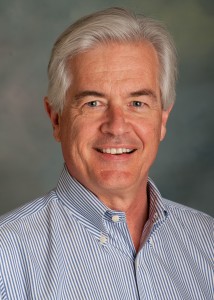CSUN Professor Finds L.A. Program Positively Affects Disconnected Youth

Photo of management professor, Richard Moore.
California State University, Northridge management professor Richard Moore, who teaches in the David Nazarian College of Business and Economics, has spent the past five years monitoring a city experiment designed to dramatically improve the lives of disconnected youth. What he found is that youth showed significant improvement in education and employment outcomes.
The Los Angeles Performance Partnership Pilot (LAP3) is a large-scale experiment to dramatically improve the lives of disconnected youth ages 16-24, who are out of school and out of work. The program is funded by a U.S. Department of Education innovation grant, which created a strategic plan to provide integrated services to disconnected youth to expand education and workforce opportunities in Los Angeles.
“Out of the nine initial P3 projects around the country, L.A. city’s project was the most ambitious,” said Moore. “It was in many ways the most successful. Our rigorous impact evaluation found a positive impact on youth served.”
Beginning in 2015, Moore and a team of CSUN professors and graduate students assessed the impact of the LAP3 initiative for the federal government.
Led by the City of Los Angeles’ Economic and Workforce Development program, LAP3 brought together the many city and county agencies that serve disconnected youth, to coordinate and rationalize their work.
The study found that participants were three times more likely to complete a degree or certificate or return to school, if they had not completed secondary school, than similar youth not in the program.
The study also found that after receiving services, LAP3 youth were more likely to be employed than similar youth who received traditional services. The most at-risk youth in the program, the “opportunity youth” – individuals between the ages of 16-24 who had been involved in the criminal justice system, experienced homelessness, were high school dropouts or had been part of the foster care system – also had positive outcomes.
Moore said the work of the P3 program continues, and the model is being extended to other areas in Los Angeles County. Part of the effort to expand LAP3 is the Reconnecting Los Angeles Youth (ReLAY) Institute, headquartered at CSUN. The ReLAY Institute engages the research, educational and service capacities of the faculty, staff and students and the work of the research centers and institutes of the five California State Universities in Los Angeles County: Pomona, Los Angeles, Dominguez Hills, Long Beach and Northridge.
ReLAY provides a platform designed to support those committed to drafting a highly effective systematic change that redefines how L.A.’s services for opportunity youth are understood and moved forward in the Greater Los Angeles region. In addition to working with the CSU’s, ReLAY works with regional service providers, L.A. city and L.A. County leaders, and philanthropic organizations to transform the future for opportunity youth.
“What ReLAY does is stay within the mission of the CSU system by providing greater access to the disadvantaged communities in Los Angeles County, to various either education opportunities or preparing those working with this population to assist disadvantaged youth,” said Henrik P. Minassians, the ReLAY Institute director.
To learn more about the ReLAY Institute, visit https://relayinstitute.org/.

 experience
experience